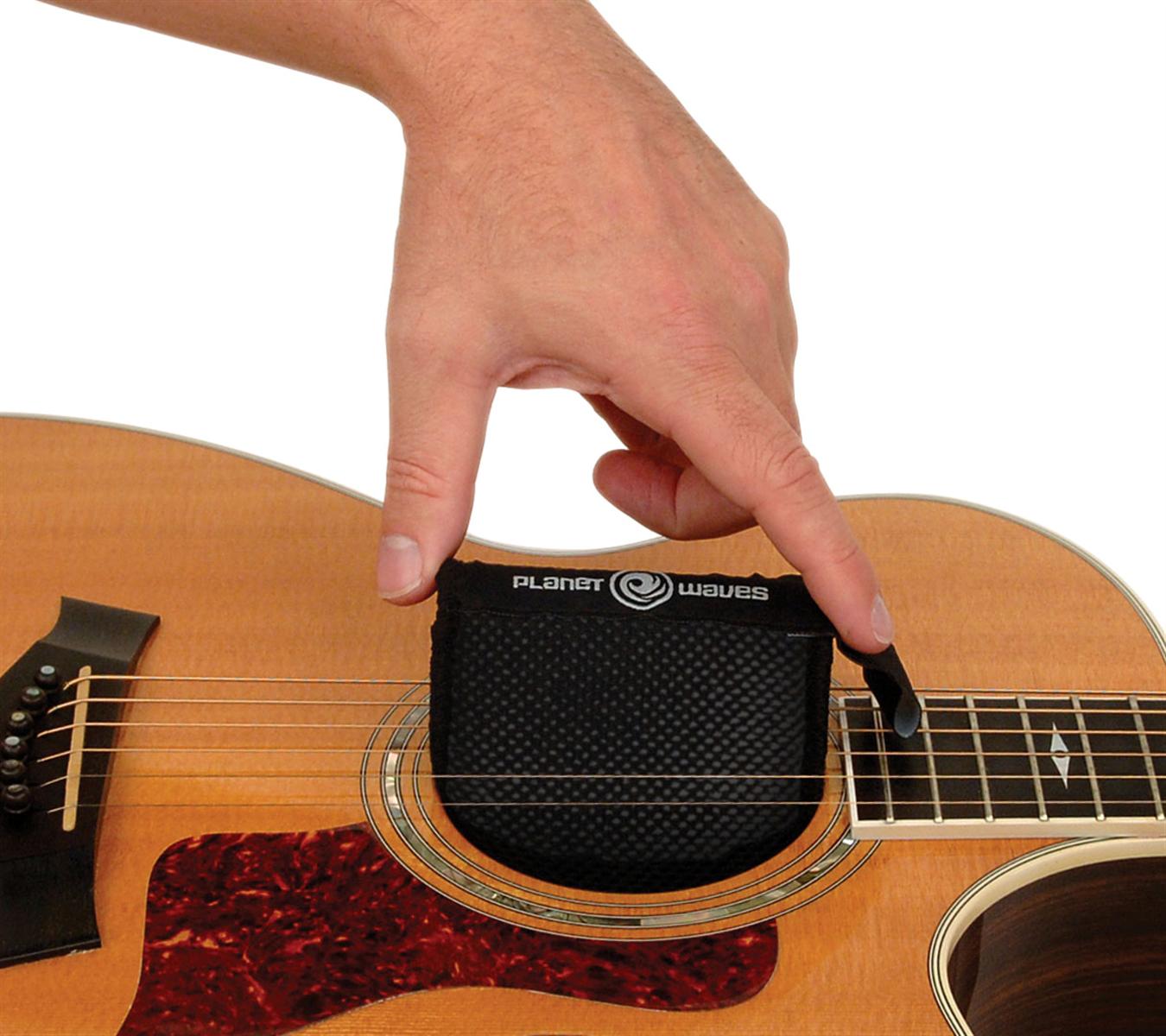You may already know that a premium acoustic guitar should be kept between 45-50% humidity, but knowing it is one thing – actually getting it there is another. And how bad is it if you’re a few percentage points off that sweet spot?
Taking care of a premium acoustic is a bit like hitting the gym: you know in the long term you’ll be in better shape if you keep it up every day, even though the changes seem incremental at the time.
It’s the same with your guitars: if you keep up some simple and regular principles you can keep your acoustic playing as well as the day you bought it.
You should also keep in mind that most guitar manufacturers will not cover damage to your guitar through humidity or damp problems, even if the guitar is in warranty. So keeping your guitar safe is pretty important.

Gel packs like the Planet Waves Humidipak are one of the easiest ways to ensure your guitar stays at the humidity sweet spot.
Guitar Humidity Guide
Low Humidity |
High Humidity |
| What is ‘low’ humidity for a guitar? Below 40% Relative Humidity | What is ‘high’ humidity for a guitar? Above 60% Relative Humidity |
Early warning signs
|
Early warning signs
|
| Worst case scenario: Below 40% can be a bit of a horror story: less moisture in the air means the wood dries out and starts to shrink. The arch of the top and bottom of the guitar top start to flatten and the soundboard wood itself and the lacquer that coats it can begin to crack. The fretboard can shrink and because the frets themselves aren’t susceptible to variations in air moisture they won’t, so the frets will start to overhang the edge of the fingerboard, making it uncomfortable to play. Because the soundboard starts to shrink and flatten, the bracing connected to it can start to come loose, too. | Worst case scenario: Although high humidity is a bit more difficult to deal with, it is generally much safer for your guitar. Just as the low RH will cause the top to drop, High RH will cause the top to rise as the wood takes on more moisture and starts to expand. This can make your action high and inconvenient to the point of unplayability, and can also limit the movement of the sound board making your guitar sound tight and less reverberant. Neither of these things are desirable, and although some mild fluctuations in RH are to be expected and any guitar will be able to withstand them, it’s best to try and avoid too much variation so that the guitar remains structurally sound and playable. |
Tips for Keeping Humidity at the Right Balance
Use a guitar humidifier
So, what do you do if the RH levels start to drop or climb too low or too high? Thankfully, you can control RH levels through the use of a tailor-made guitar specific humidifier such as the D’Addario Humidipak.
The Humidipak and others like it consist of a jellylike substance inside a secure package which saddles over the strings of your guitar. Once it’s there, it naturally fits down into the sound hole where the jelly goes to work. It can just be left there while your guitar is in its case and isn’t being played. It’s as straight forward as that.
A guitar humidifier automatically adjusts to stay within 45 – 50%. It’s very clever and very easy to use, adding moisture to the air, or removing it as it sees fit!




Responses & Questions